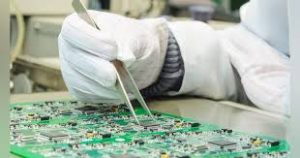How an Assembled Circuit Board Is Used in Consumer Appliances
Assembled Circuit Board Is Used in Consumer Appliances
A circuit board is an insulating substrate upon which conductive pathways are printed or etched, connecting different electronic components and enabling them to work together. A PCB can perform many complex functions in a small space, and it is used in nearly all modern electronics. They are also commonly found in many home appliances and other consumer devices. As a result, the production and assembly of an assembled circuit board requires significant expertise.
The first step in the PCB assembly process is creating a schematic, which is a diagram showing all of the elements of the board and how they are connected. This information is then converted into a layout, a physical representation of the board’s exact size and shape and the routing of all the conductive pathways.
As the next step, the bare circuit board is populated with electronic components to form a functional printed circuit assembly (PCA), or sometimes printed circuit board assembly (PCBA). This process is known as surface-mount technology or SMT. As part of this process, the assembler places the component leads on the board so that they line up with conductive pads or lands on one or both sides of the board. These conductive pads are then held in place by solder paste, which was previously applied to the pad surfaces. The assembler uses inspections throughout this process to ensure the correct placement of all the components.
In the final steps of the assembly process, the assembler fuses the lead wires to the assembled circuit board by heating them in an oven using a method called reflow soldering. This reflows the solder, ensuring that all connections are properly formed and solidified. As the circuit board cools, it undergoes inspection to verify that all the connections are firmly in place and that the assembly will function as intended.

How an Assembled Circuit Board Is Used in Consumer Appliances
The most basic type of circuit board is a single-sided board, which has conductive pathways on only one side of the substrate. Double-sided boards are a step up in complexity, and they have conductive pathways on both sides of the substrate. Multilayer boards have additional internal layers of copper and insulation, which give the assembler more options for routing circuit connections.
Some types of assembled circuit boards are used in electronic devices that require high-speed signaling or more rigorous electrical requirements, such as computer motherboards and automotive electronics. These types of circuit boards are designed to be durable and withstand a lot of abuse, such as heat, moisture and even physical force, to ensure that they continue to work as expected.
Other assembled circuit boards are used in consumer appliances such as refrigerators and coffee makers, which need to be able to tolerate low-level electric currents for long periods of time without failing. The production of these more durable and longer-lasting boards involves a more extensive testing process. The resulting assemblies are usually more expensive to produce, but they provide a much greater level of reliability and longevity than their cheaper counterparts.